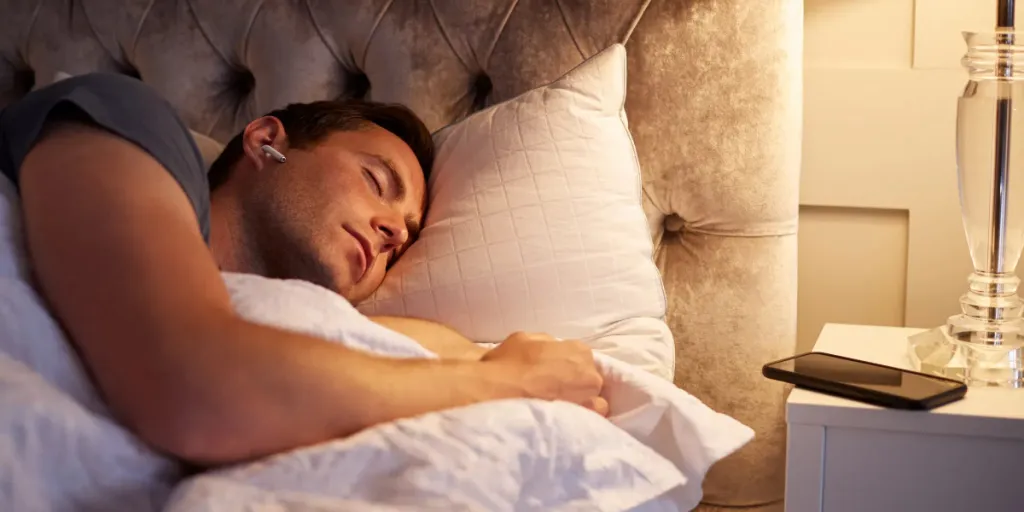Falling asleep and staying asleep can be challenging, so many people turn to music, soundscapes, podcasts, audio books, or white noise to help get some shut-eye. However, finding the best headphones to sleep comfortably can be a challenge, especially if one sleeps on their side, as traditional headphones can be uncomfortable for side sleepers. The pressure on the ear from lying on a pillow can cause discomfort, pain, and even damage to the headphones.
Specialized headphones for side sleepers are designed to be ultra-thin, soft, and durable, ensuring a comfortable and uninterrupted sleep experience. In this guide, we’ll help you find the best sleep headphones for side sleepers.
So let’s get started!
Table of Contents
Does listening to something before sleep help?
Key features to look for in side sleeper headphones
Types of sleep headphones
Top sleep headphones for side sleepers
5 tips for using sleep headphones safely
Final thoughts
Does listening to something before sleep help?
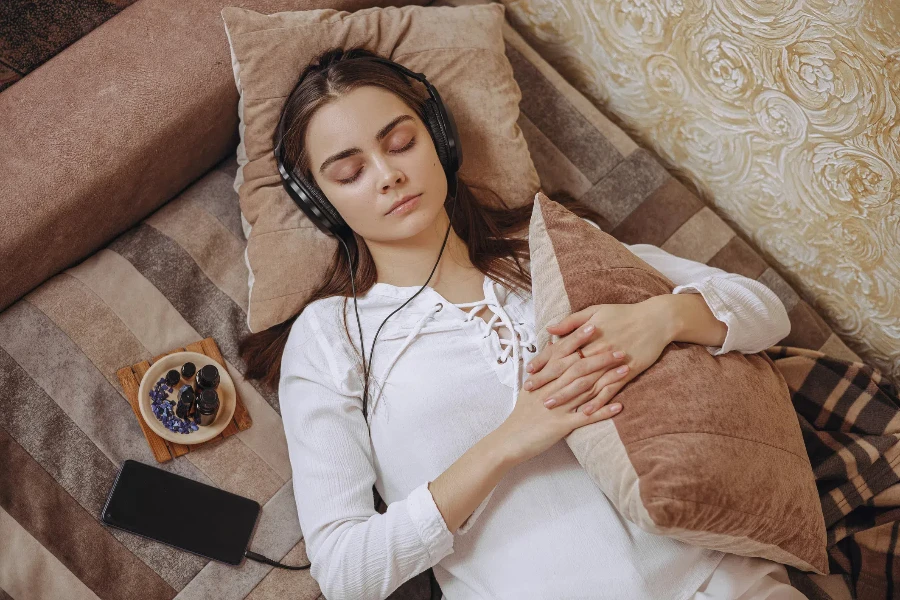
Gentle sounds can significantly enhance the ability to fall asleep by calming the mind, regulating sleep patterns, masking environmental noise, inducing physiological relaxation, providing psychological comfort, and engaging the mind in a non-stimulating way. By incorporating these sounds into the bedtime routine, one can create a more conducive environment for restful and uninterrupted sleep.
Key features to look for in side sleeper headphones
Before diving into the top models, let’s discuss the essential features to consider:
- Comfort and fit: The headphones should have a low-profile design to prevent discomfort when lying on one side.
- Sound quality: Look for headphones that provide clear and soothing sound to help relax and fall asleep.
- Noise isolation: Effective noise isolation can block out external noises, creating a peaceful environment.
- Battery life: Ensure the headphones have a long battery life to last through the night. The goal should be to make it through the entire night on a single charge.
- Wireless vs. wired: Wireless headphones offer more freedom of movement, while wired ones don’t need recharging.
For many people, it may also be important to consider ease of use as many people will be using them in the dark and, at times, when they’re half asleep.
Types of sleep headphones
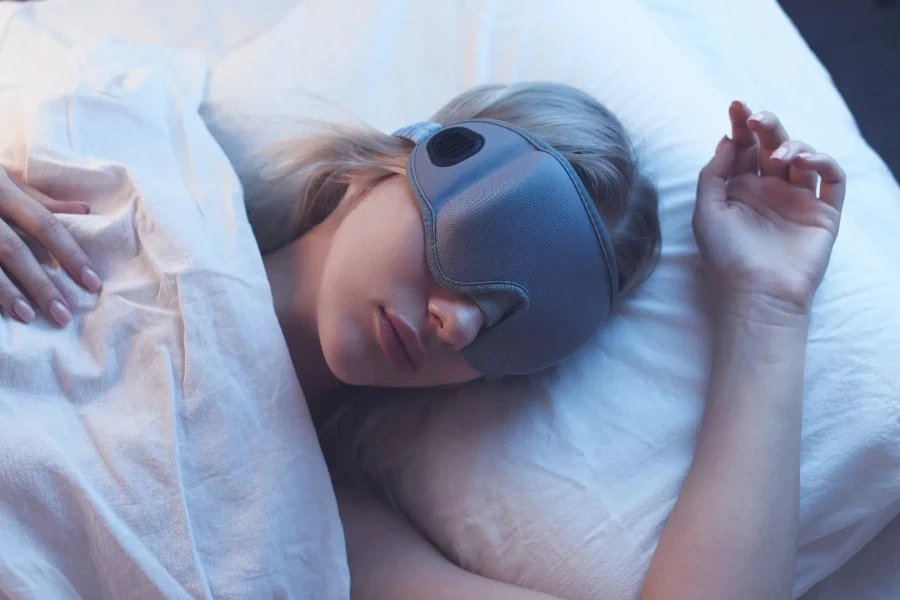
Sleep headphones come in various types, each designed to cater to different sleeping habits, preferences, and comfort levels. Here’s an overview of the main types of sleep headphones available:
1. Headband headphones
Headband headphones are designed with ultra-thin speakers embedded in a soft, fabric headband. They are ideal for side sleepers as the headband lies flat and doesn’t cause pressure on the ears.
- Examples: CozyPhones, Lavince Sleep Headphones, LC-Dolida Sleep Headphones and Mask
- Pros: Extremely comfortable, can double as an eye mask, often washable.
- Cons: May not offer the best sound quality, can get warm in hot climates.
2. In-ear sleepbuds
In-ear sleepbuds are small, snug-fitting earbuds designed specifically for sleeping. They often come with multiple ear tip sizes to ensure a perfect fit.
- Examples: Soundcore by Anker, QuietOn Sleep Earbuds.
- Pros: Excellent noise isolation or masking, comfortable for most people, high-quality sound.
- Cons: More expensive, can be uncomfortable for some users if worn for extended periods.
3. On-ear sleep headphones
On-ear sleep headphones rest on the ear rather than inside it. They are designed to be as flat and comfortable as possible.
- Examples: MAXROCK Sleep Earplugs, Bedphones.
- Pros: Comfortable for many people, can be used during travel or relaxation.
- Cons: Might still cause some discomfort for strict side sleepers, varying sound quality.
4. Bone conduction sleep headphones
Bone conduction sleep headphones work by transmitting sound through the bones of the skull, bypassing the eardrum entirely. This type can be beneficial for those who find traditional headphones uncomfortable.
- Examples: AfterShokz Aeropex, Vidonn F1.
- Pros: Leaves ears open, suitable for people with hearing issues, comfortable for side sleepers.
- Cons: More expensive, the sound quality may not be as rich, less common for sleep use.
Top sleep headphones for side sleepers
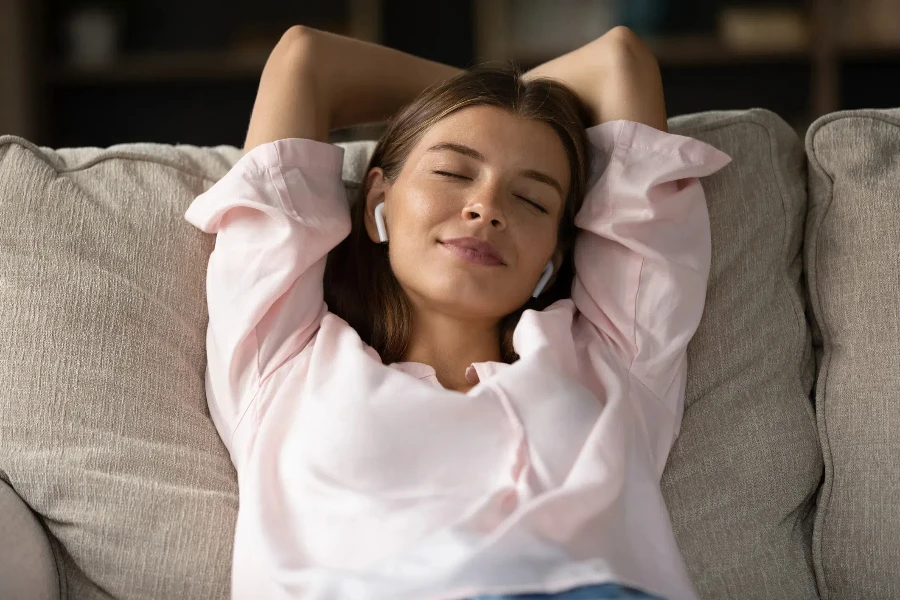
Here are some of our top picks for the best headphones for side sleepers.
Headband headphones
As we mentioned, headband headphones are an excellent choice for side sleepers as the speakers are embedded into a headband, so they lie flat against the head rather than needing to be inserted into the ears.
There are two types of headband headphones, one that is simply a headband like the Lavince and Perytong Sleep Headphones, and one that can also function as a sleep mask to block out light.
Our top pick is LC-Dolida Sleep Headphones and Mask. They are ergonomically designed to fit around the eyes and nose, providing complete darkness and comfort for side sleepers. This design also helps block out more ambient noise due to the eye mask covering the ears partially. Additionally, the sound quality is better than that of the Lavince and Perytong Sleep Headphones.
Soundcore by Anker Sleep A20 earbuds
While earbuds aren’t ideal for all side sleepers, one of the most important qualities of good earbuds for side sleepers is comfort, which means earbuds that feel nearly invisible. For many side sleepers, these headphones will fit the bill. The biggest downside with these headphones is the noise canceling. While they provide some passive noise canceling, they may not be the number one pick for those in louder sleeping environments.
One added bonus with these sleep earbuds is the Anker Soundcore app. With the app, people can set alarms, pre-set when the earbuds shut off, or loop the white noises that help fall asleep. Most people find these earbuds don’t fall out during the night because the tips come in different sizes, but if they do, the app can help to find them easily.
QuietOn 3.1 sleep earbuds
For those looking for more active noise cancellation, the QuietOn earbuds may be the best noise-canceling headphones for sleep. They fit comfortably and provide a silent night’s sleep even in the loudest sleeping environment, like a loud snoring partner or living on a busy street with high traffic. The biggest downside is they do not have Bluetooth connectivity so cannot play a podcast or listen to music. However, not having this feature means an extra-long battery life for active noise canceling.
While these are more like extremely effective earplugs, they could be the best solution for those seeking to block out all external noise.
Bedphones by DubLabs on ear sleep headphones
If wearing earbuds isn’t appealing, Bedphones on ear sleep headphones are another great option for side sleepers. They function more like a headband without the extra fabric, which could be great for those extra warm sleepers or those who don’t like the idea of a headband or eye mask.
These sleep headphones feature two ultra-thin flat speakers connected by a rubber-coated memory wire. The wire and the ear hooks are fully adjustable to allow people to find the perfect fit for their ears, ensuring maximum nighttime comfort. But for some, the wire connecting the headphones could be annoying or uncomfortable.
5 tips for using sleep headphones safely
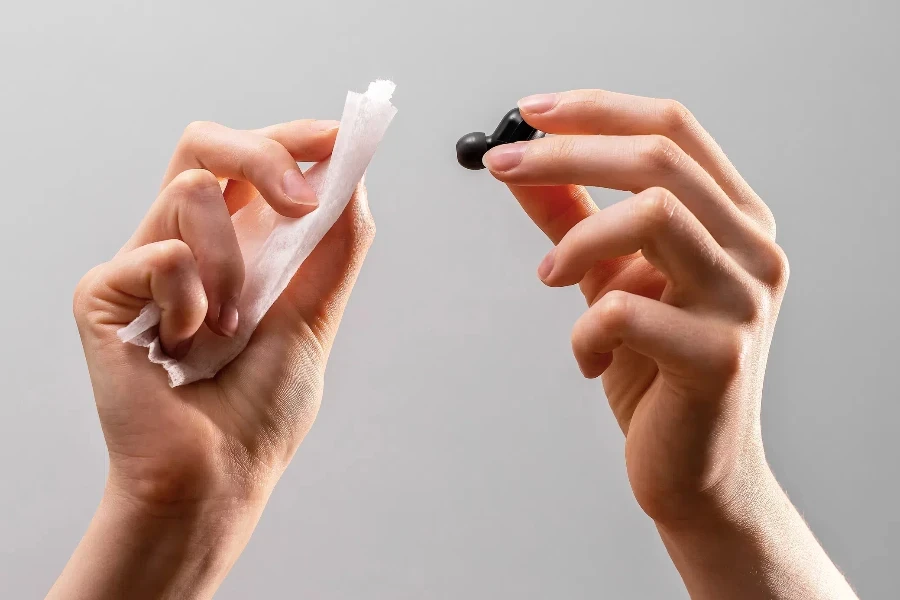
Sleep headphones can significantly enhance the sleep experience, but using them safely is essential to avoid potential risks and discomfort. Here are some tips to ensure safe and effective use of sleep headphones:
1. Choose the right fit
- Comfort: Ensure the sleep headphones fit comfortably without causing pressure on ears or head, especially for side sleepers. Ill-fitting headphones can cause discomfort or even injury over time.
- Size: Use the appropriate size ear tips or headband to ensure a snug but comfortable fit.
2. Keep volume at safe Levels
- Volume control: Keep the volume at a moderate level to avoid damaging hearing. Listening at high volumes for extended periods can lead to hearing loss.
- Safe listening levels: A good rule of thumb is to keep the volume at or below 60% of the maximum level.
- White noise: To mask external noises, consider using white noise or nature sounds at a lower volume instead of increasing the volume.
- Noise isolation: Use headphones with good noise isolation features to reduce the need for high volume.
3. Take regular breaks
- Avoid prolonged use: Give the ears a break by not using sleep headphones every night. Continuous use can lead to ear fatigue or infections. This is particularly true for in-ear headphones.
- Alternate methods: Use other sleep aids like white noise machines.
4. Maintain good hygiene
- Clean regularly: Clean the sleep headphones regularly to prevent the buildup of earwax, dirt, and bacteria. Follow the manufacturer’s instructions for cleaning.
- Replace ear tips: If using in-ear headphones, replace the ear tips periodically to ensure they remain clean and hygienic.
5. Monitor for discomfort or pain
- Watch for symptoms: Be aware of signs of discomfort, pain, or irritation. If one experiences these symptoms, stop using the headphones and consult a healthcare professional if necessary.
- Adjust fit: Make adjustments to the fit or try different types of sleep headphones if experiencing discomfort.
Final thoughts
Determining the best headphones for side sleepers can be challenging because everyone has different sleep preferences. But by offering a range of specialized headphones for side sleepers, electronics retailers can cater to a growing market of tech-savvy customers looking for ways to enhance their sleep quality. Whether you’re new to the electronics business or looking to expand your product offerings, these top headphones for side sleepers are a great addition to your inventory.
